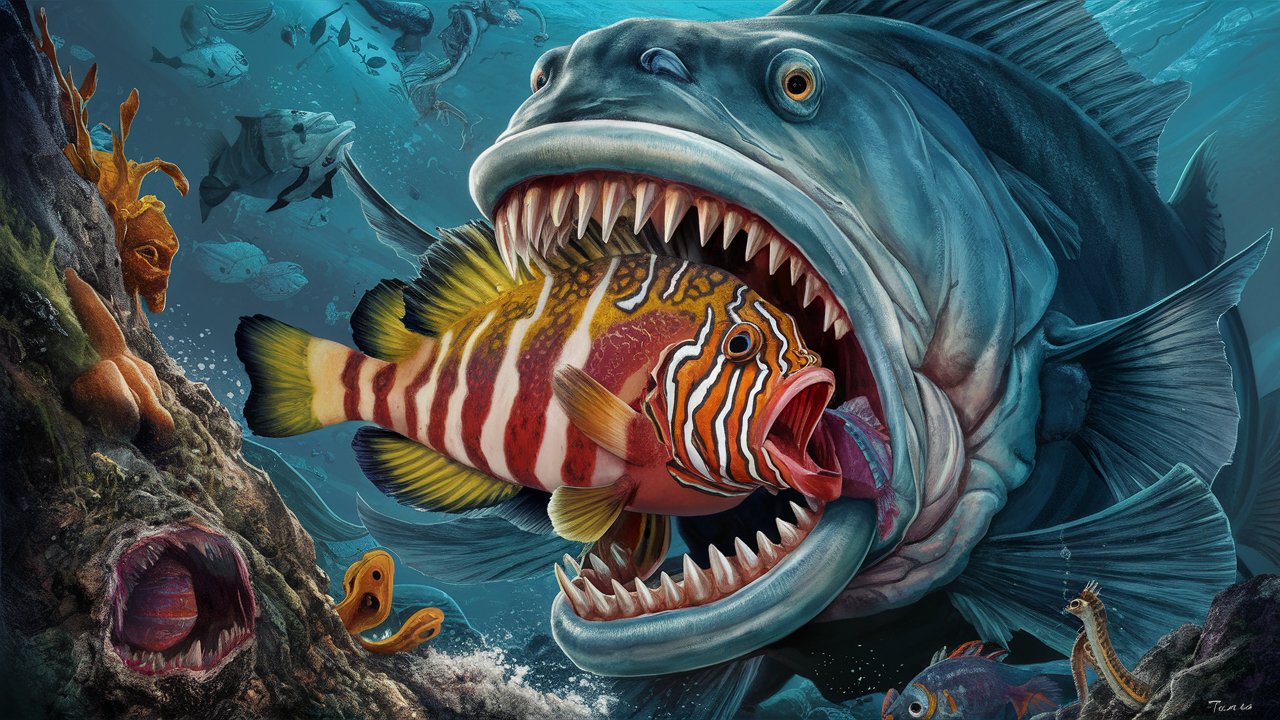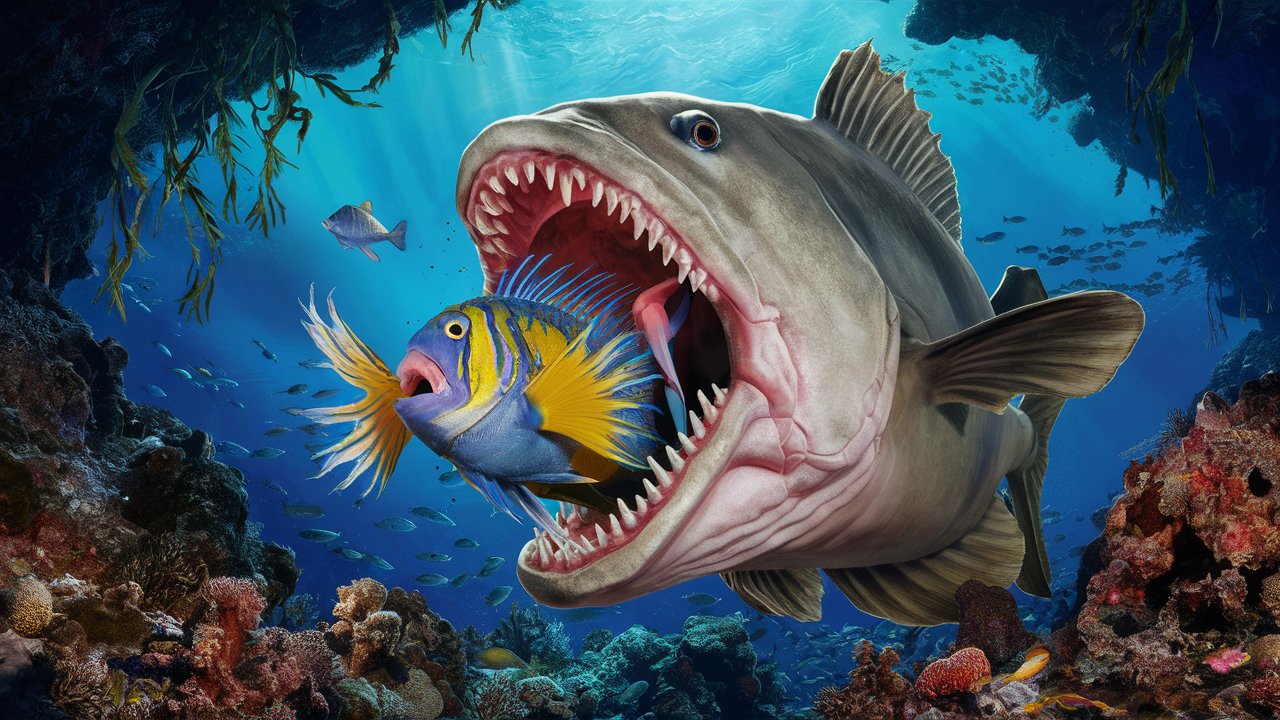What Eats Parrot Fish?
Introduction
Parrot fish are vibrant and vital members of the marine ecosystem, known for their role in maintaining coral reefs. However, like all creatures in the ocean, they have their share of predators. In this article, we’ll explore what eats parrot fish, their defensive mechanisms, and the impact humans have on their populations.
Understanding Parrot Fish
Overview of Parrot Fish
Parrot fish are a diverse group of species found in tropical and subtropical oceans. Their defining feature is their beak-like teeth, which they use to scrape algae and coral. These fish are essential to coral reefs, helping to keep algae in check and promoting coral growth.
Importance of Parrot Fish in the Ecosystem
Parrot fish contribute significantly to the health of coral reefs by feeding on algae that can otherwise overgrow and suffocate corals. Their feeding activity also produces sand, contributing to beach formation and the overall marine environment.
Natural Predators of Parrot Fish
Larger Fish Species
Parrot fish are preyed upon by larger fish species such as groupers and snappers. These predators are well-adapted to catching parrot fish, often stalking them around the reefs and ambushing them when they least expect it.
Sharks
Various species of sharks, including reef sharks and tiger sharks, hunt parrot fish. Sharks are opportunistic feeders and will take advantage of the availability of parrot fish, especially when they are sleeping or resting.
Moray Eels
Moray eels are another significant predator of parrot fish. These eels lurk in crevices and holes within the reef, waiting for an unsuspecting parrot fish to swim by before striking quickly.
Human Impact on Parrot Fish
Fishing Practices
Humans pose one of the most significant threats to parrot fish populations through overfishing. In some regions, parrot fish are targeted for their meat, which is considered a delicacy. Unsustainable fishing practices can drastically reduce their numbers.
Habitat Destruction
Coral reef destruction due to pollution, climate change, and destructive fishing practices also impacts parrot fish. As their natural habitat diminishes, so does their population, making them more vulnerable to predation.
Defensive Mechanisms of Parrot Fish
Sleeping in Mucus Cocoons
One unique defense mechanism parrot fish use is creating a mucus cocoon to sleep in. This cocoon masks their scent from nocturnal predators and offers some protection while they rest.
Camouflage and Hiding
Parrot fish can blend into their surroundings using their vibrant colors and patterns. They often hide in crevices and among corals to avoid detection by predators.
Role of Parrot Fish in the Food Chain
Contribution to Coral Reef Health
Parrot fish play a crucial role in maintaining the balance of the reef ecosystem. By feeding on algae, they prevent overgrowth that can harm corals, thus promoting a healthy reef environment.
Their Place in the Marine Ecosystem
As both prey and contributors to reef health, parrot fish are an integral part of the marine food web. They help sustain a variety of marine life by supporting coral reefs and providing a food source for larger predators.
Conservation Efforts to Protect Parrot Fish
Marine Protected Areas
Establishing marine protected areas (MPAs) can help safeguard parrot fish populations. MPAs restrict harmful activities like overfishing and habitat destruction, allowing parrot fish to thrive and maintain their ecological role.
Sustainable Fishing Initiatives
Promoting sustainable fishing practices ensures that parrot fish are not overexploited. Regulations and guidelines help balance human consumption with the conservation of parrot fish populations.
Interesting Facts About Parrot Fish

Unique Feeding Habits
Parrot fish have a unique diet, primarily consuming algae and dead coral. This feeding behavior not only sustains them but also keeps coral reefs clean and healthy.
Parrot fish can live up to 7 years in the wild, with some species living longer under ideal conditions. Their growth and lifespan can be influenced by environmental factors and the availability of food.
Conclusion
Parrot fish are fascinating and essential members of the marine ecosystem, facing numerous natural predators and human-induced threats. Understanding what eats parrot fish and their role in the food chain helps underscore the importance of conservation efforts. By protecting these vibrant creatures, we ensure the health and balance of our precious coral reefs.
FAQs
1.What do parrot fish eat?
Parrot fish primarily eat algae and dead coral, which they scrape off with their beak-like teeth. This diet contributes to the health of coral reefs.
2.How do parrot fish protect themselves from predators?
Parrot fish protect themselves by sleeping in mucus cocoons, which hide their scent, and using camouflage to blend into their surroundings.
3.Are parrot fish endangered?
Some species of parrot fish are threatened due to overfishing and habitat destruction. Their populations must be protected, and this requires conservation activities.
4.What role do parrot fish play in the ecosystem?
Parrot fish help maintain coral reef health by feeding on algae, preventing overgrowth, and promoting coral growth. The equilibrium of marine ecosystems depends on them.
5.How can we help conserve parrot fish?
Supporting marine protected areas, advocating for sustainable fishing practices, and participating in coral reef conservation projects can help protect parrot fish populations.
